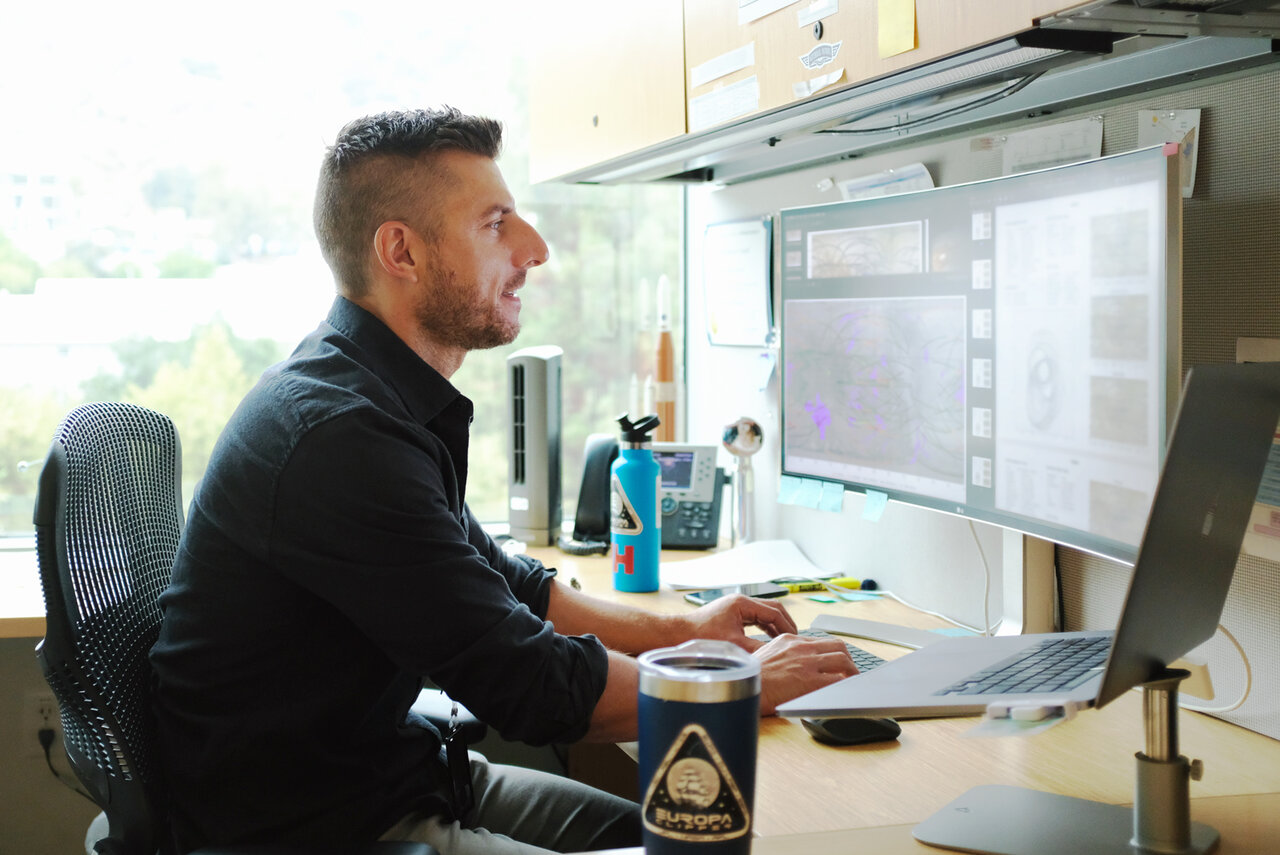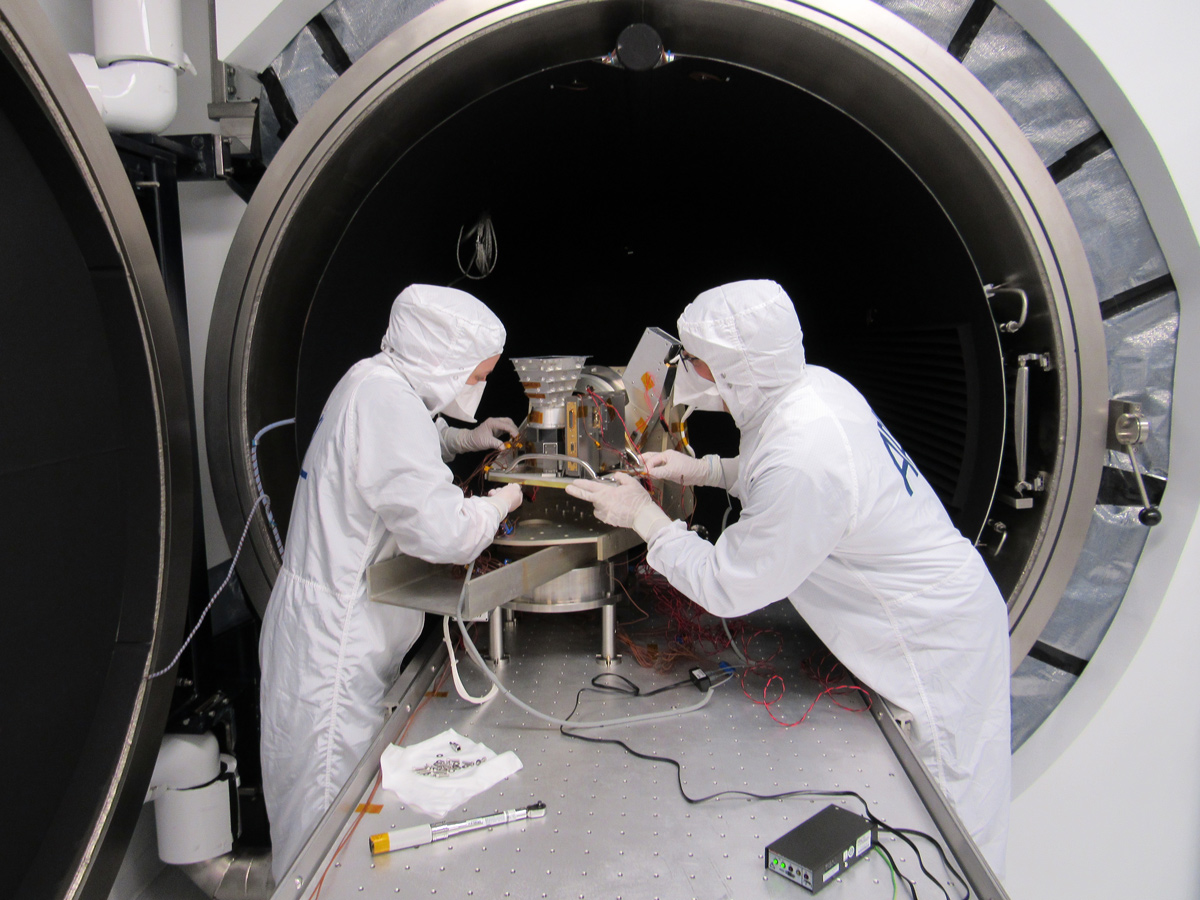Mission Updates | December 6, 2021
Mission Dispatch: Tweaking the Trajectory

Brent Buffington, Europa Clipper's mission design manager, working on the spacecraft's trajectory in his office at NASA's Jet Propulsion Laboratory in Southern California. Credit: NASA/Jay R. Thompson
Every part of Europa Clipper’s flight path, or trajectory, is important – from launch in 2024 until end-of-mission in the mid-2030s.
But the mission’s scientific target is Europa, so the most complex and demanding segment of the spacecraft’s trajectory is the three years when it performs repeated flybys of the moon. This part of the mission is called the “tour.”
The tour is what NASA engineer Brent Buffington was working on on September 1, 2021 (seen above), in his office at NASA’s Jet Propulsion Laboratory in Southern California.
“Right now we’re in the middle of the ‘tour tweak’ process,” Buffington said. “We’re optimizing already-designed tours based on scientist feedback to further enhance the science return.”
Buffington is Europa Clipper’s mission design manager. His team created a variety of candidate science tours for the mission. Each tour is a precise series of elliptical orbits around Jupiter in which the spacecraft passes near Europa 45-plus times.
The goal of each flyby is to pass near Europa at the best distance, speed, lighting conditions, and location (both over the surface and in Europa’s orbit) to maximize science return while safely operating the spacecraft. The collective goal of all the flybys is to confirm or disprove that Europa has a subsurface water ocean, and to assess whether the icy moon has the chemistry, energy input, and other conditions needed to support some form of life.
Different proposed tours send Europa Clipper over different swaths of the moon’s surface (called groundtracks) on different dates, at different cadences, at different distances, and at different places in Europa’s orbit. The spacecraft’s science instruments and investigations are required to make certain observations, and each has its own ideal conditions for those observations.

For example, to reveal the moon’s internal structure, the gravity science investigation needs the spacecraft to pass through Europa’s gravity field several times when the moon is both near Jupiter and farther from Jupiter. On the other hand, the visible wavelength cameras need to observe Europa’s surface in a variety of lighting conditions and at a variety of distances to study surface features and to map the moon at a higher resolution than ever before.
The mission design team strives to not only accommodate both the cameras and gravity science, but also the seven other instruments and investigations onboard Europa Clipper, each with their own required observations. Tour design must also manage fuel consumption, time between flybys, mission duration, cumulative radiation, ensure communication with Earth during key events, ensure the solar panels receive enough sunlight, and much more. Each proposed tour aims to find the right balance between fulfilling scientific objectives and meeting the demands of operating the spacecraft.
Long before a single instrument or solar panel for Europa Clipper was assembled, Buffington’s team had already started developing possible science tours. Over many years, they presented possible tours to the mission’s leading engineers and scientists, who then provided feedback. Buffington’s team then further refined the tours.
The mission design team will continue refining Europa Clipper’s trajectory as the mission prepares for launch in October 2024. While Buffington’s team sculpts Europa Clipper’s trajectory, other teams are refining different aspects of the mission. All these teams are essential to help the Europa Clipper mission blaze a trail for the study of ocean worlds, and the search for habitable worlds beyond Earth.
By Jay R. Thompson


